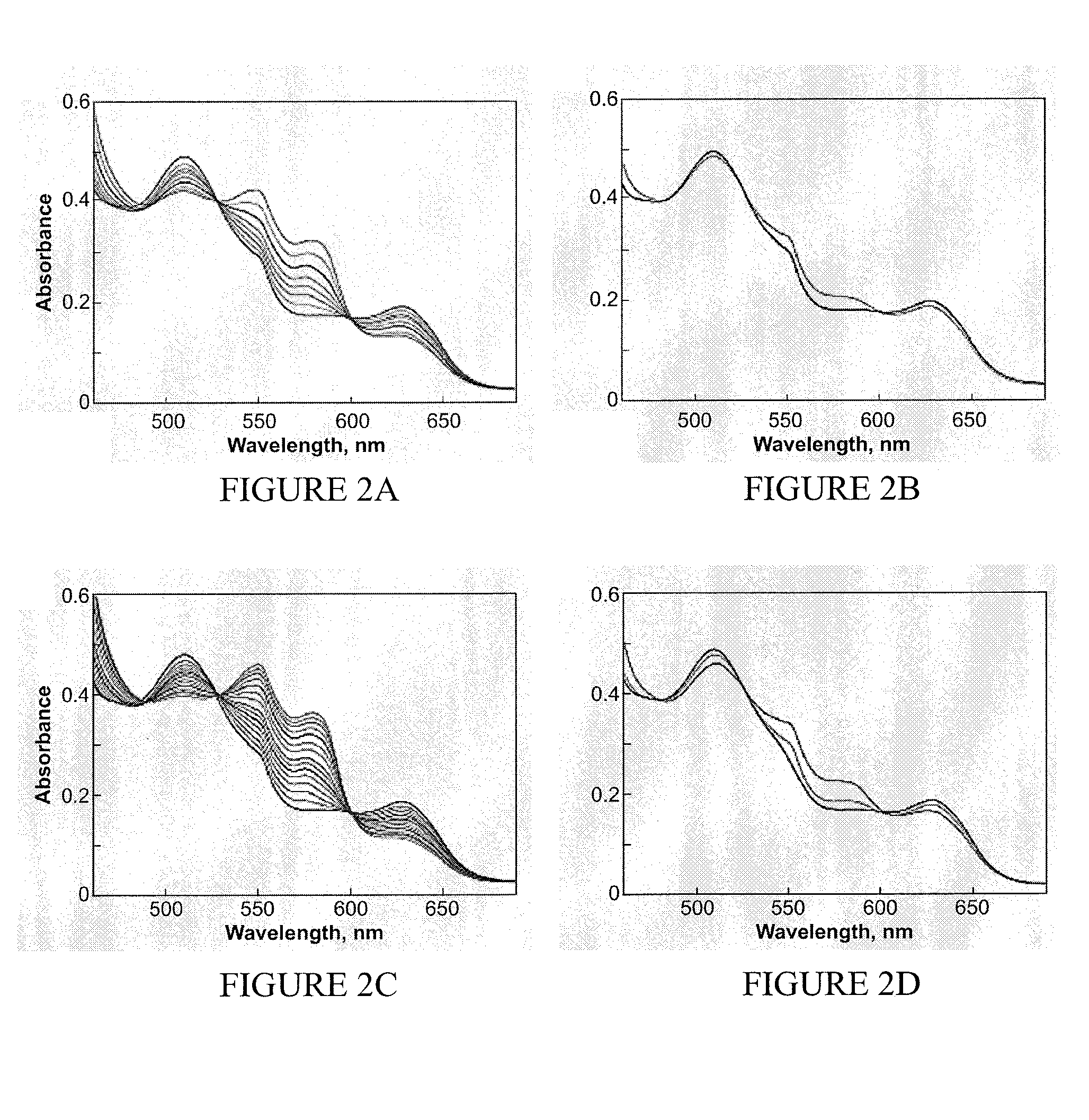Nitroxyl (HNO) releasing compounds and uses thereof in treating diseases
a technology of nitroxyl and releasing compounds, which is applied in the field of nitroxyl (hno) releasing compounds and its use in treating diseases, can solve the problems of inability to rationally exploit the pharmacological properties of these salts, gaps in literature, and no one suitable for these salts
- Summary
- Abstract
- Description
- Claims
- Application Information
AI Technical Summary
Benefits of technology
Problems solved by technology
Method used
Image
Examples
example 1
[0101]This example demonstrates a method of synthesis of O2-(acetoxymethyl) 1-(isopropylamino)diazen-1-ium-1,2-diolate (AcOM-IPA / NO) (2) in accordance with an embodiment of the invention.
[0102]A solution of bromomethyl acetate (867 mg, 5.67 mmol) in 3 mL of THF was reacted with a slurry of IPA / NO (800 mg, 5.67 mmol, in 10 mL of DMSO) at room temperature. The reaction mixture was stirred overnight whereupon 15 mL of water is added and stirring was continued for another 10 min. The residue was extracted with dichloromethane, washed with 5% sodium bicarbonate, dried over anhydrous sodium sulfate, filtered, and evaporated in vacuo to give a colorless oil. Column chromatography was performed using hexane:acetone (4:1) to give the desired product 2 (880 mg, 81%): UV (ethanol) λmax (ε) 240 nm (8.7 mM−1 cm−′); NMR (CDCl3) δ 1.19 (d, J=6.4 Hz, 6H), 2.12 (s, 3H), 4.00 (sept, J=6.4 Hz, 1H), 5.75 (s, 2H), 6.25 (d, J=9.1 Hz, 1H); 13C NMR (CDCl3) δ 20.34, 20.81, 49.17, 87.07, 169.42. Anal. Calcd ...
example 2
[0103]This example illustrates kinetic studies of AcOM-IPA / NO (2) prepared in Example 1 in accordance with an embodiment of the invention.
[0104]The rate constants of decomposition were measured spectrophotometrically by monitoring the decrease in absorbance of peaks at ˜240-250 nm characteristic of the diazeniumdiolate functionality. The hydrolysis medium consisted of the metal chelator diethylenetriaminepentaacetic acid (DTPA, 50 μM) in calcium- and magnesium-free Dulbecco's phosphate-buffered saline (PBS, pH 7.4). UV-visible spectroscopy was performed with a Hewlett-Packard 8453 diode-array spectrophotometer equipped with Agilent 89090A thermostat set to 37° C. The spectrophotometer was blanked after warming the cuvette containing buffer at the appropriate pH in the instrument heat block for 5 min. For esterase-containing reactions, porcine liver esterase (20 μL; Sigma; suspension in 3.2 M (NH4)2SO4, pH 8) was added to the reaction buffer before blanking. Upon addition of IPA / NO (...
example 3
[0105]This example illustrates reductive nitrosylation of metmyoglobin by AcOM-IPA / NO (2) prepared in Example 1 in accordance with an embodiment of the invention.
[0106]To determine whether the products of hydrolyzing 2 include HNO, a method of trapping it with metmyoglobin (metMb) according to Equation 1 was established. This reductive nitrosylation reaction was followed spectrophotometrically by monitoring the decrease in metMb absorbance at 502 nm and the simultaneous increases in the peaks at 543 and 575 nm for MbNO.
metMb+HNO→MbNO+H+(k=8×105 M−1 s−1) Equation 1
[0107]Reductive nitrosylation of ferric myoglobin (metMb) to nitrosyl myoglobin (MbNO) by 1 or 2 was monitored in a quartz cuvette in assay buffer at 37° C. Formation of HNO was further examined by quenching with GSH, which does not interact directly with low concentrations of NO. To maintain deaerated conditions, all solutions were transferred using gas-tight Hamilton syringes, and the reaction buffer was sparged with ult...
PUM
| Property | Measurement | Unit |
|---|---|---|
| pH | aaaaa | aaaaa |
| rate of decay | aaaaa | aaaaa |
| pH | aaaaa | aaaaa |
Abstract
Description
Claims
Application Information
 Login to View More
Login to View More - R&D
- Intellectual Property
- Life Sciences
- Materials
- Tech Scout
- Unparalleled Data Quality
- Higher Quality Content
- 60% Fewer Hallucinations
Browse by: Latest US Patents, China's latest patents, Technical Efficacy Thesaurus, Application Domain, Technology Topic, Popular Technical Reports.
© 2025 PatSnap. All rights reserved.Legal|Privacy policy|Modern Slavery Act Transparency Statement|Sitemap|About US| Contact US: help@patsnap.com



